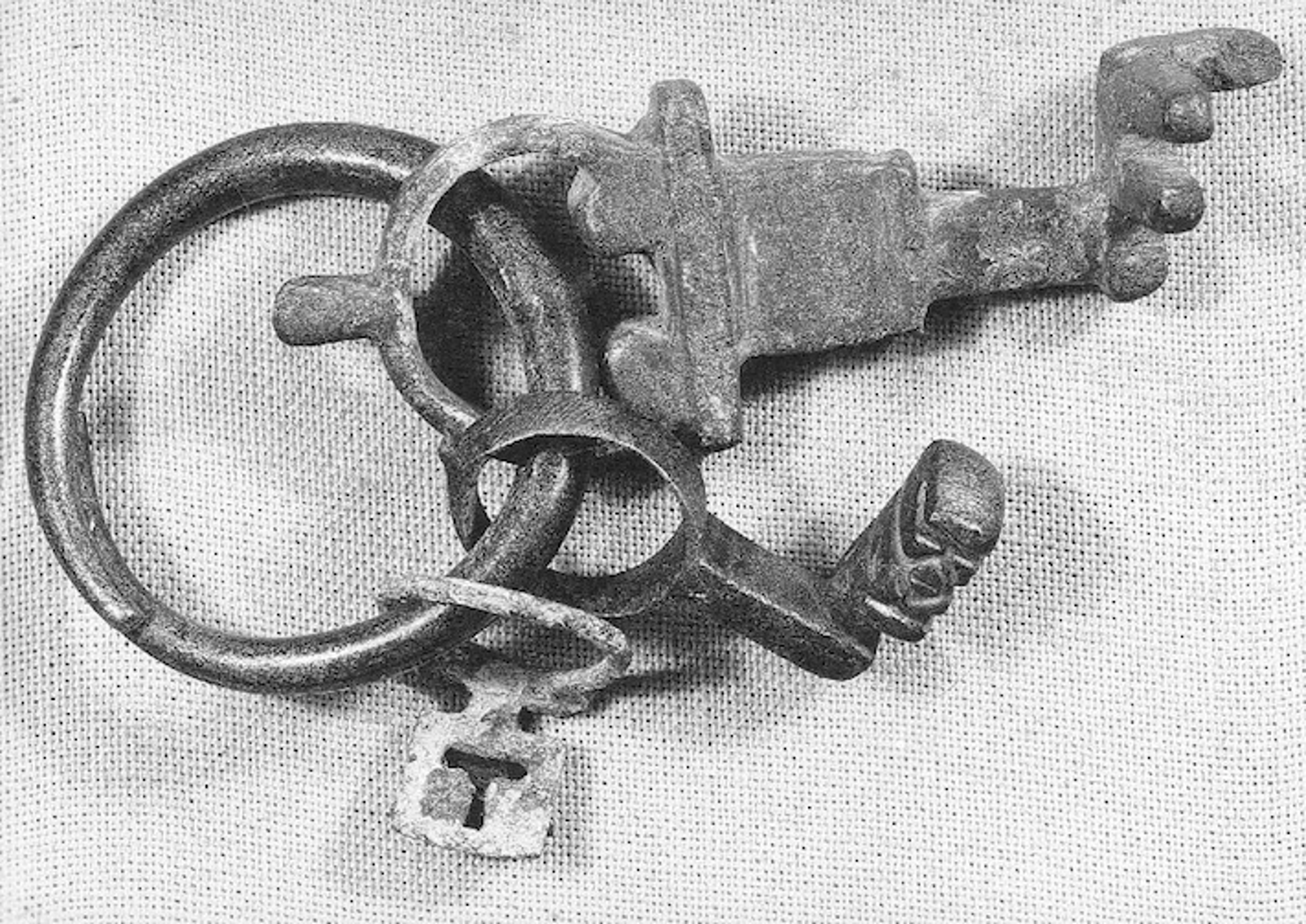Since ancient times, people have incorporated keys into their clothing and jewelry. Keys are needed frequently, so they need to be kept close at hand. And to protect your valuables, what better place to hide a set of keys than in plain sight?
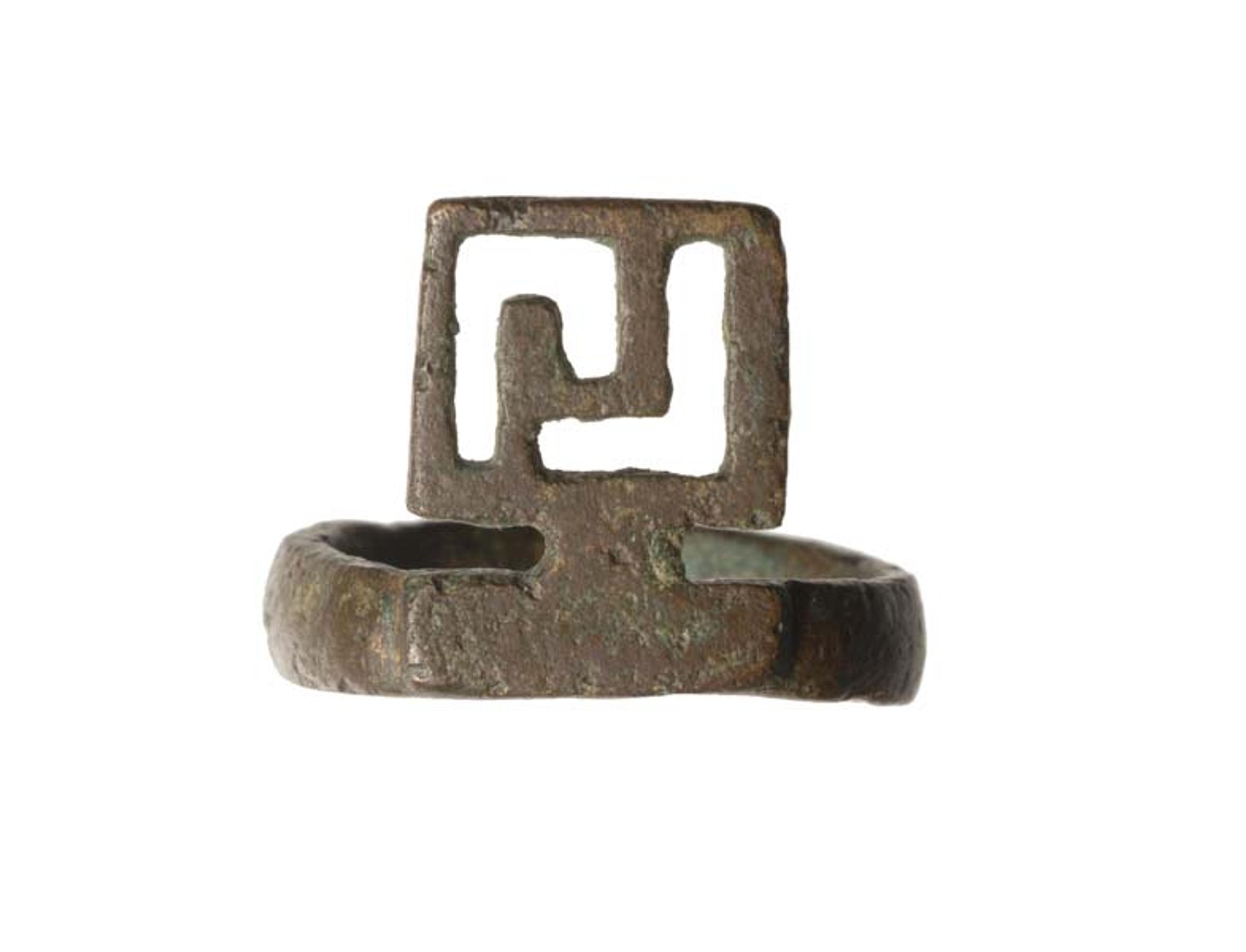
Roman key rings from the Museum of London's collection.

The togas worn by many ancient Romans didn’t have pockets, so wearing your house key on your finger was one of the best options for keeping track of it. Affluent Romans often kept their valuables in secure boxes within their households, much like we do today. They wore the keys as rings on their fingers, with varying levels of decoration adorning them.
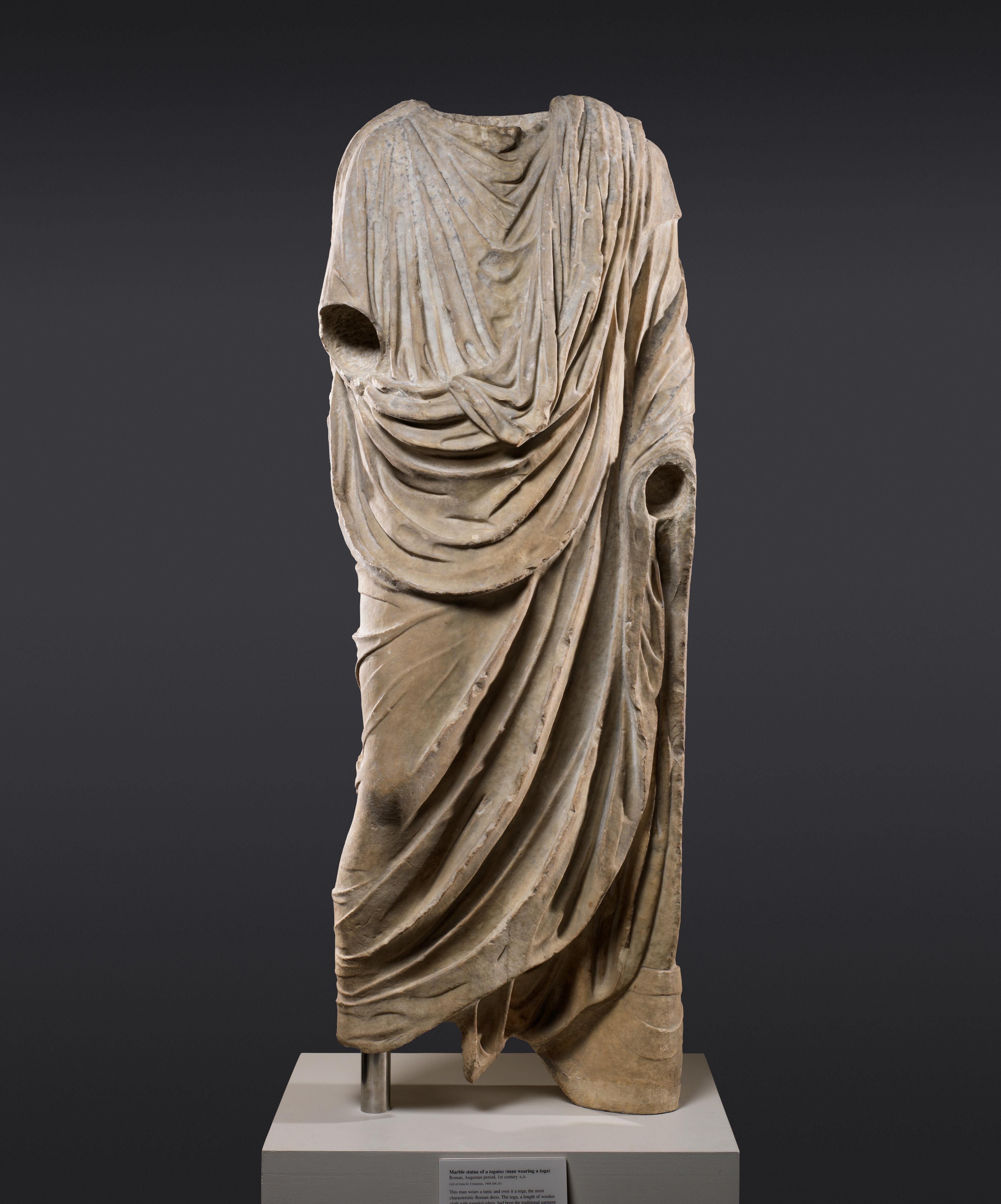
Marble statue of a togatus (man wearing a toga), 1st century A.D.,...
This practice was so commonplace that sometimes these rings wouldn’t even be functional. Intricate gold bezels would be made in the style of Roman bronze key rings found throughout the Empire, but these ones were purely to flex status. If your ring-key looked priceless, just IMAGINE what’s stored in the box that it opens.
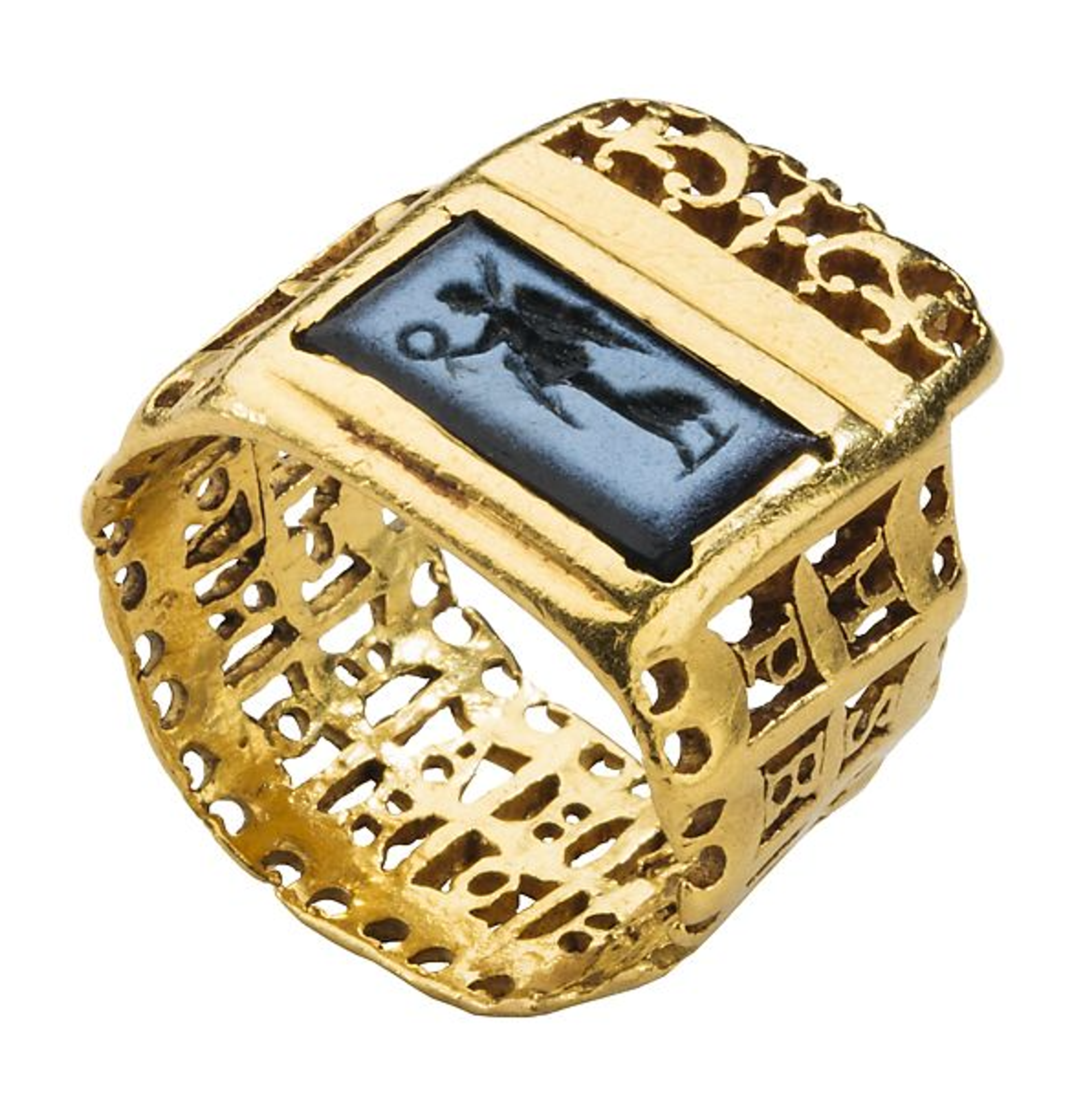
Late Roman Key Ring “Homonoea”, late 3rd - early 4th century, Metropolitan...
Most Roman locks were what are called warded locks, meaning that they had metal wards or fingers within the lock that must exactly match the cut out areas of the key. Warded locks continued to be used long after the fall of the Roman empire, but the key ring fell out of vogue. Keys switched to being kept on loops, or chains, or dangling on waist belts.
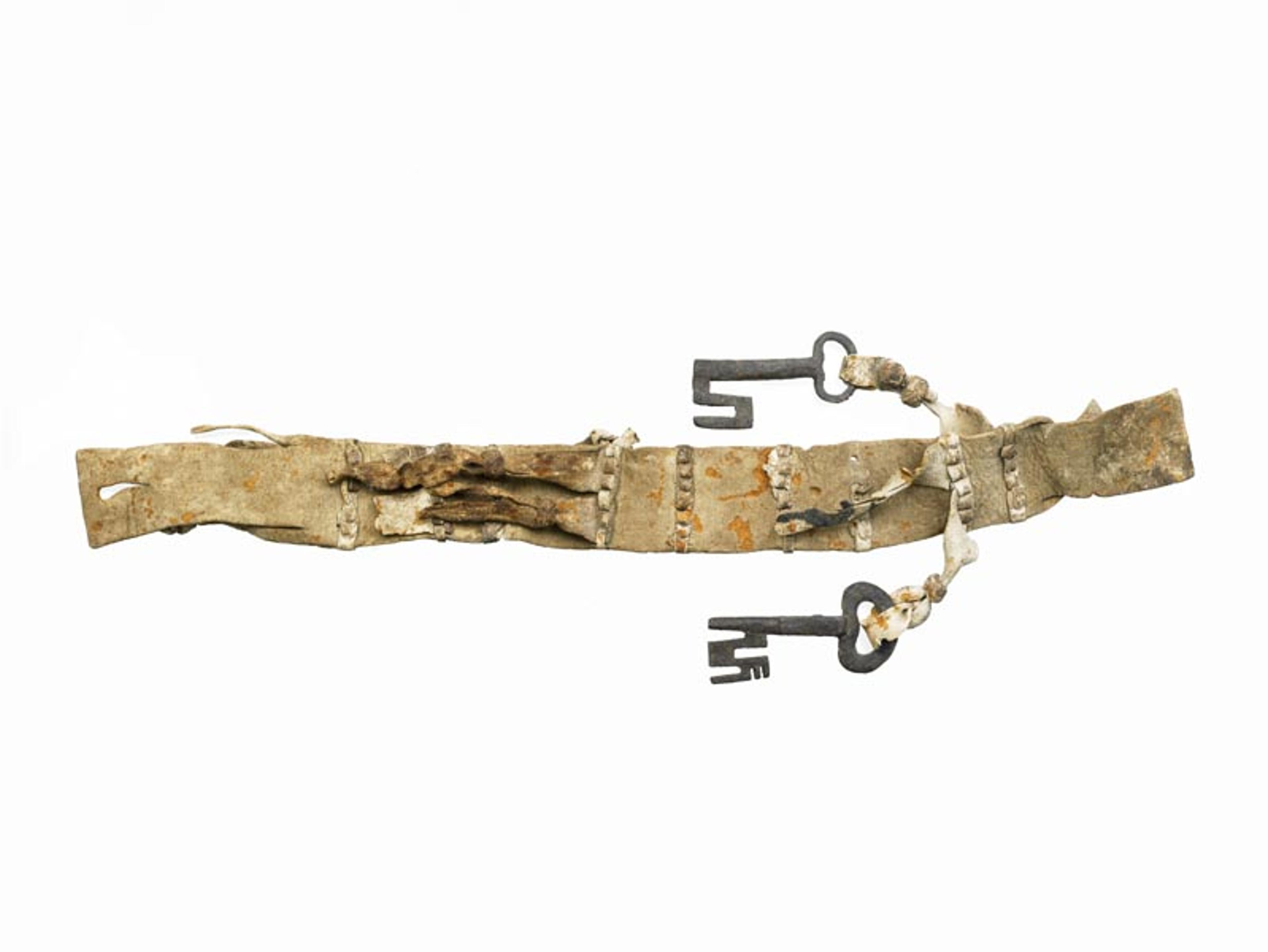
Key belt, 16th century.

Illustration from the Illuminated manuscript Le Secret des Secrets, Alain Chartier, Le...
advancements in lock technology came about in the 18th century, when a prolific inventor named Joseph Bramah created a cylindrical key with precise notches along the surface. These “Bramah Locks” are now regarded as the first high-security locking systems.
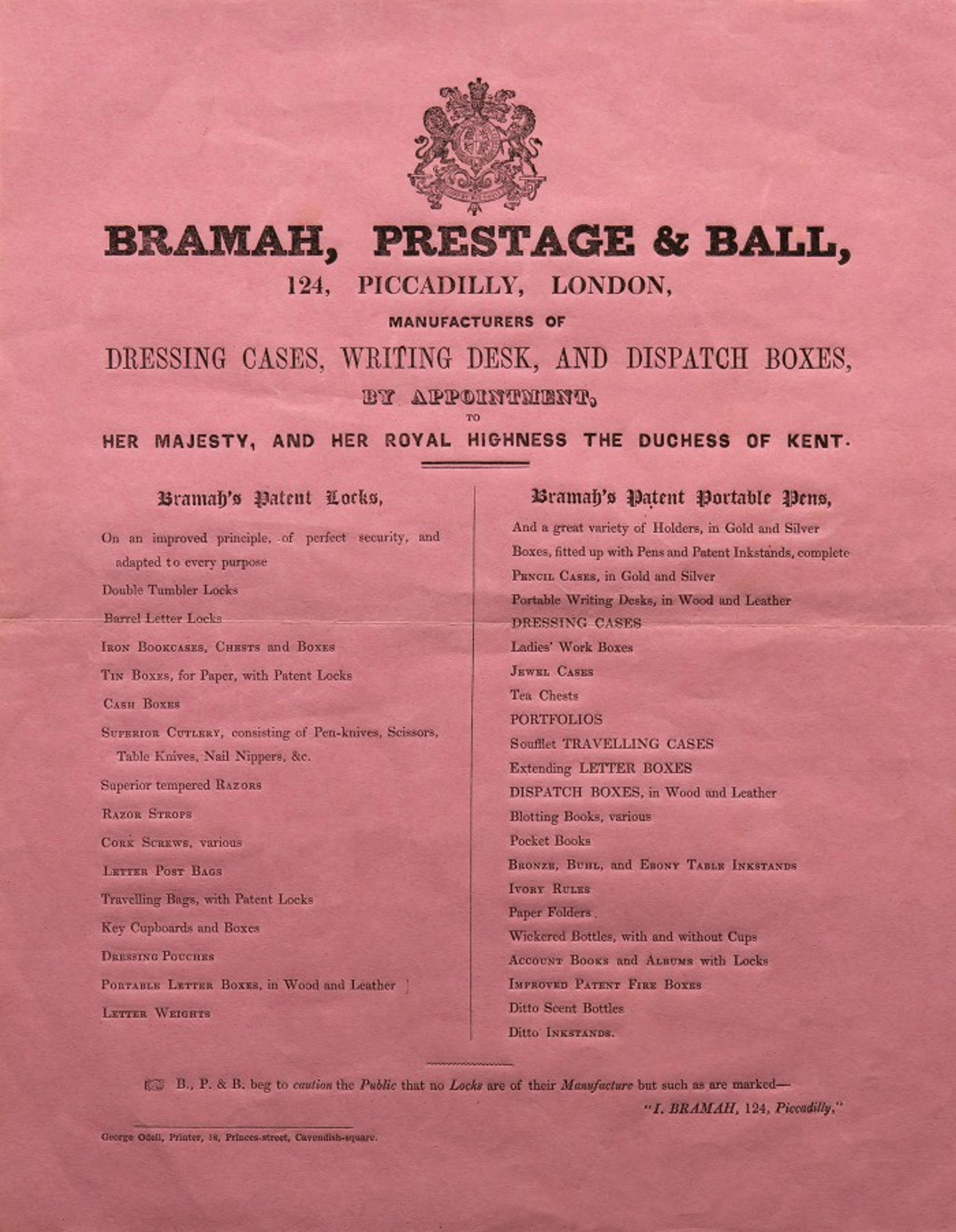
Bramah advertising literature.
Bramah was so confident of his design that he had a challenge lock installed in the window of his London shop, with the following message: "The artist who can make an instrument that will pick or open this lock shall receive 200 guineas the moment it is produced."
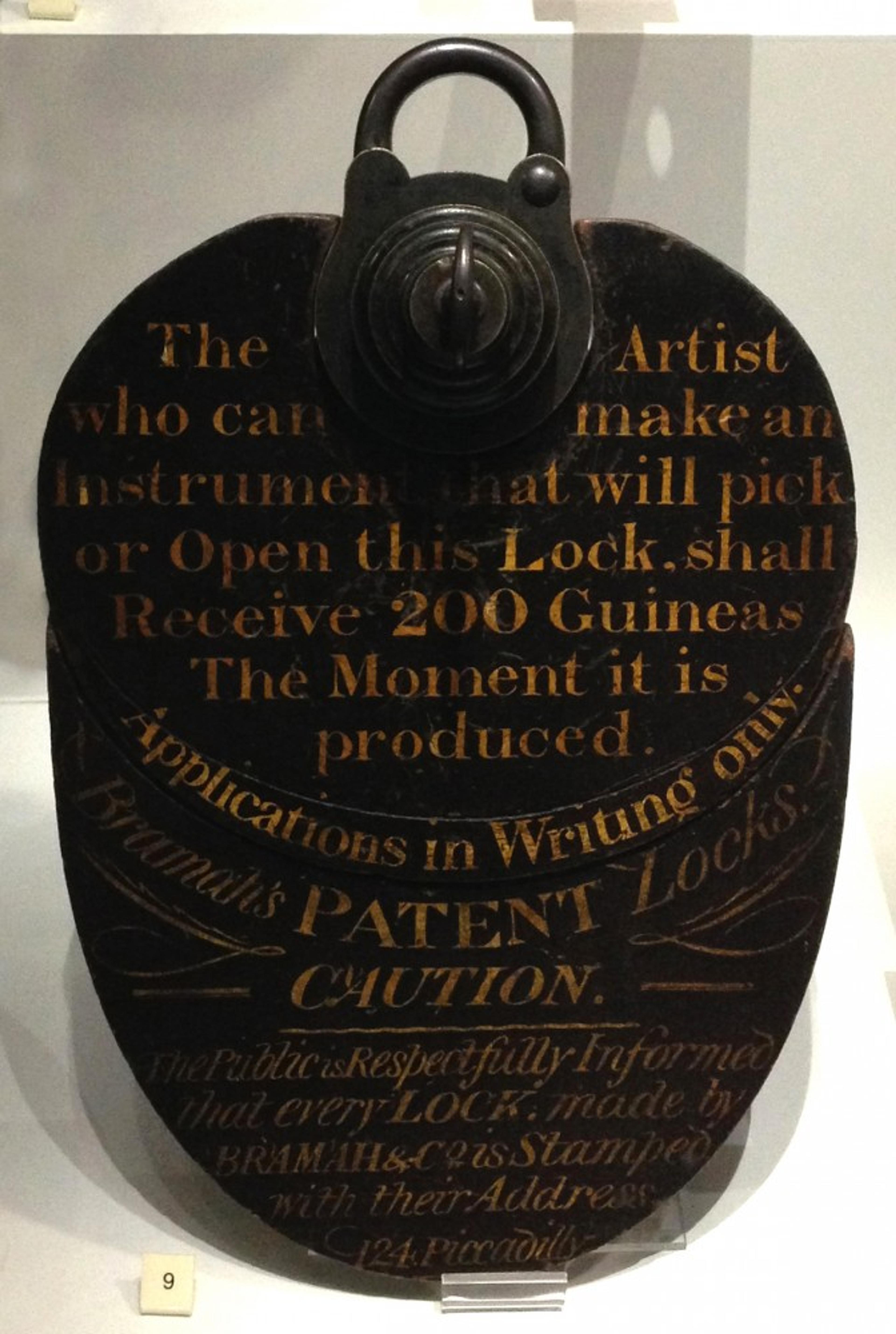
Bramah Challenge Lock sign.
With all of the hype of this new technology (and the Victorians’ love for anything novel), it’s no surprise that hidden key rings came into style.
These pieces are rare: having a custom key ring made was a luxury only the wealthy could afford. Like their Roman predecessors, these Victorian key rings were meant to open a jewelry box, or some sort of coffer holding valuables.
As for the lock challenge? It remained unanswered for over 60 years, but someone did eventually crack it. Alfred Charles Hobbs, an American locksmith, was able to open the lock at the Great Exhibition in 1851. It took him 51 hours spread over 16 days. He was reluctantly given the prize money of 200 guineas — the same buying power of about 30,000 current US dollars. The Bramah lock’s reputation took a major hit after Hobbs was able to open it. It faded out of popularity, taking the second wave of key rings with it.

The Great Exhibition, 1851.
We continue to hear our jewelry dealers and customers refer to these antique hidden key rings as “Bramah rings.” The jewelry boxes they once opened are long lost.
